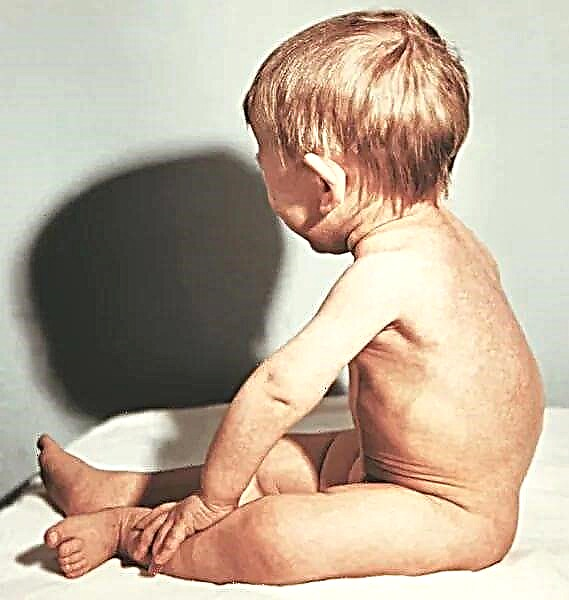Urine is a biological fluid that contains various metabolic end products. In addition, substances indicating a particular pathology in the body can be determined in the urine. For example, ketones in urine are one of the diagnostic signs of serious illness. It will be described in more detail what ketones are and what role they play.
What are ketone bodies
The mechanism of formation of ketone bodies in the body
Ketone bodies (ketones) include substances such as acetone, acetoacetate, hydroxybutyric acid. In general, these substances are a source of energy for cells. Since these substances are hydrophilic, they easily penetrate into biological body fluids, for example, into urine.
Ketone bodies are formed from acetyl-CoA... This substance is formed during the metabolism of fatty acids. Normally, a small amount of ketone bodies is present in the blood.
Why ketone bodies appear in urine
The presence of ketone bodies in the urine is called ketonuria. The appearance of ketones in urine occurs with an increase in ketone bodies in the blood.
This happens when it is impossible to obtain energy from glucose, therefore, there is an increased breakdown of fats and ketogenesis (synthesis of ketones).
In the blood, the content of ketone bodies is normally less than 0.5 mmol / l. Detection of ketones above this value is called ketonemia.
In adults and children
The detection of ketones in urine can be caused by reasons such as fasting and diabetes... Glucose is the main source of energy. During fasting, glucose ceases to come from food, so the body looks for other ways to synthesize energy.
Ketone bodies in the urine of a child are most often found when insufficient feeding.
In diabetes mellitus, there is a deficiency of insulin, which promotes the transfer of glucose into cells for energy. Accordingly, with a lack of insulin, glucose does not enter the cell. And energy is obtained by oxidizing ketone bodies.
As described earlier, ketone bodies are a source of energy. In adults, they can also form when the food intake and the energy expenditure of the body do not match.
For example, you are on a low-carbohydrate diet, that is, you get glucose, but not enough. Plus, you are still engaged in increased physical activity (you disappear in the gym for hours). The carbohydrates consumed are not enough for your body, and ketones begin to be intensively produced. Therefore, it is important to balance the amount of protein, fat and carbohydrates in the diet.

In pregnant women
There is evidence that in pregnant women, the presence of ketone bodies in the first trimester in the urine is the first sign of toxicosis. Ketone bodies from urine should disappear in the future. However, the detection of ketonuria at a later date suggests the development of pathology in pregnant women, which requires additional research.
It is important to monitor the level of ketone bodies in the blood and urine, as they are toxic and cause the development of ketoacidosis. In the future, this can lead to disruption of the working capacity of the heart, respiratory organs, and blood circulation. Thus, it is important not to miss ketonuria and prevent the development of serious complications in time.
Normal values of ketone bodies and acetone in urine
In children and adults, ketone bodies should normally not be detected. When measured in the daily volume of urine, the concentration of ketone bodies should be no more than 50 mg.
Most of all, hydroxybutyric acid is excreted in the urine (65 - 70%). In second place is acetoacetate (about 30%). And the least acetone is excreted in the urine - 3%.
Most of the acetone is excreted through the lungs, so a characteristic odor from the mouth is sometimes felt.
There is a dependence of the level of ketone bodies in the blood and urine. When the level of ketone bodies in the blood rises to 1.0 mmol / l, “traces” of ketones are noted in the urine. When ketonemia reaches 1.5 mmol / L, significant ketonuria occurs.
Preparing for a urine test
Preparing for a urine test for ketones is the same as for a general urine test.
Diet
It is important not to eat foods that change the color of urine (beets). Talk to your doctor about the medications you are taking. Perhaps some of them can affect the parameters of urine.
Mode
Avoid emotional stress the day before the study. Exhausting physical activity can also affect the result. Baths or saunas are not recommended.
Other

- Collect urine in a sterile container. Who does not want to bother with boiling baby food jars should know that special containers are sold in the pharmacy.
- It is important to toilet the external genitalia. The average portion of morning urine should be collected in the container, since it is more concentrated after sleep and more accurately reflects the processes taking place in the body.
- For babies who do not control the act of urination, it is convenient to use urine bags. They stick to the body, and after collecting urine, the contents are poured into a sterile container and taken to the laboratory.
- After collection, urine should be delivered to the laboratory within 2 hours.
How the analysis is done
The detection of ketone bodies in urine is most often carried out together with a general urine test.
A general urine test can be done in several ways:
- semi-quantitatively - using diagnostic test strips. In a visual comparison with the indicator scale, a conclusion is made;
- quantitatively - The test strips are placed in a urinary analyzer, which accurately calculates the content of substances in the urine.
There are special strips for detecting only ketones in urine.
The essence of the test strips is to change the color of the indicator depending on the amount of the analyte.
The procedure is as follows: the test strip is immersed in the urine for a few seconds, as described in the instructions that came with the test strip. Then leave for some time (a few seconds) for a reaction with the indicators to occur. Then they are compared with the scale visually or urine analyzers are used for these purposes.
As a rule, it is difficult to make a mistake in such manipulations. It is rare that due to a violation of the storage conditions of the test strips or non-compliance with the expiration dates, the results are incorrect.

Where is ketones in urine determined?
Under the compulsory medical insurance policy, you can take a urine test for free at the medical organization to which you are attached. You can also go to a paid medical center. It is desirable that he be equipped with a urinary analyzer, then the results will be most accurate.
You can find out about the availability of the analyzer by calling the medical center.
A general urine test can cost you 200 to 400 rubles when using test strips. If a microscopic examination of urine is necessary, the price may increase.
Analysis decoding
If ketone bodies are found in urine, do not panic and wind yourself up ahead of time. Contact your doctor or pediatrician with the test results. He will plan a further examination to determine the cause of ketonuria.
Patient advice
If, nevertheless, ketones were found in the child's urine, first, his diet should be analyzed: whether the baby is eating enough, whether the nutrition is balanced, whether it corresponds to the costs of the body.
Also, do not delay the visit to the doctor. Urine tests are valid for a week. If you contact a specialist later, you will need to retake the analysis.
Conclusion
From everything written above, it is clear that ketones in urine are an important diagnostic criterion for various pathological processes in the body. Ketones have a toxic effect on the body; their detection in children, adults and pregnant women should not be allowed to take their course. It is important to find out the cause of the pathological changes and start treatment on time.
Article rating:



